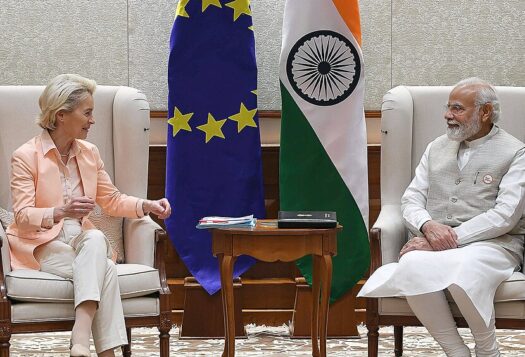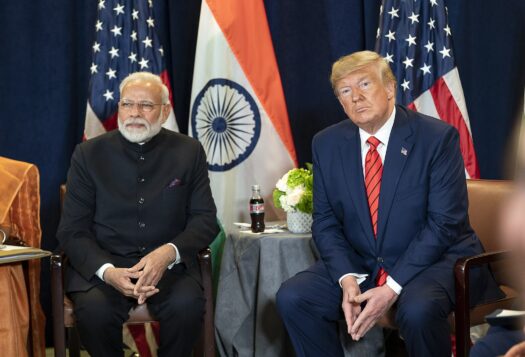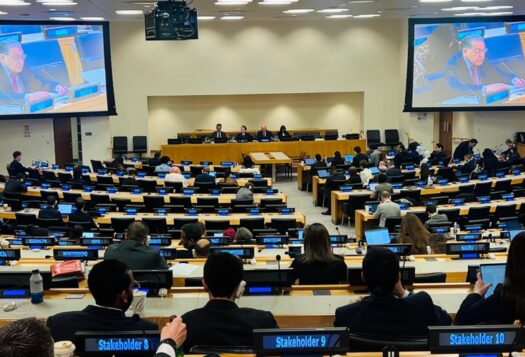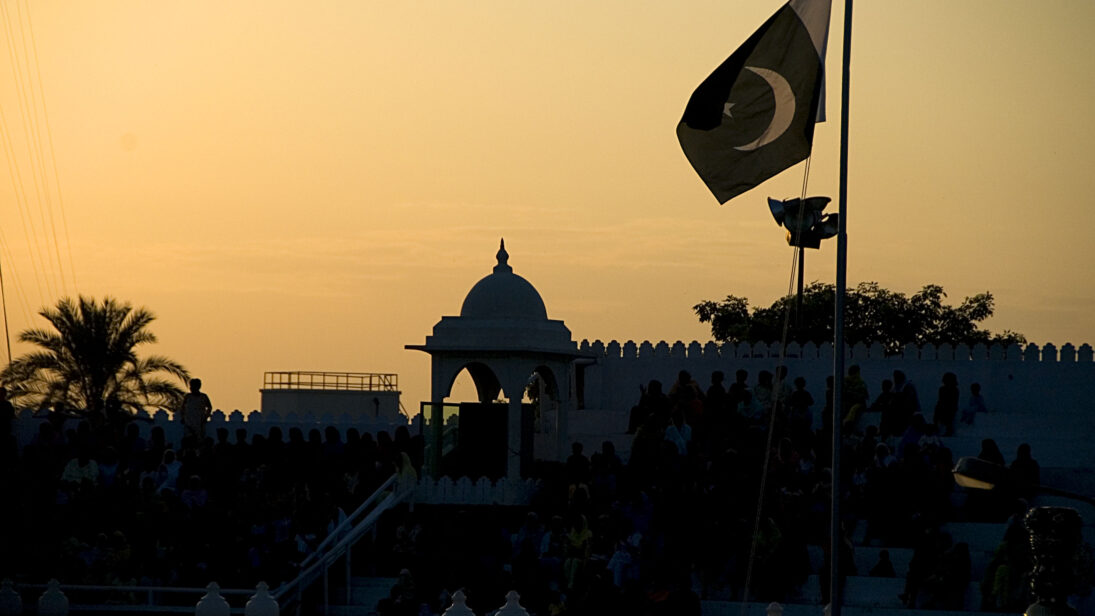
On the first of January newspapers of Pakistan and India once again carried a small non-descript column stating that both countries had shared a list of their respective nuclear installations along with an additional list of detained fisherfolk by both countries. The newspaper releases are a yearly reminder of the 1988 Confidence-Building Measure (CBM) between the two countries on Prohibition of Attack against Nuclear Installations and Facilities. The agreement has been routinized to a mere exchange of lists and in this age of increased transparency and “eyes in the sky” this routine practice appears to be perhaps a relic of an earlier time. However, while the pre-existing CBMs between the two countries require a serious and honest review, this yearly exchange reminds one of a commitment, or semblances of one, that did (and can still) work between India and Pakistan. However, it is also a reminder of an elusive and intermittent peace process that now appears more improbable.
In the past year, the only silver-lining in this fractious relation was the renewal of ceasefire on the Line of Control (LoC). Tense relations with India are not the only challenge with which Pakistan enters into 2022, the most critical being the looming humanitarian and possible civil conflict in Afghanistan. In the worst-case scenario, Pakistan faces a large inflow of refugees at a time where there appears to be no respite from the pandemic. At the domestic level, besides better governance, economic stability remains the biggest priority, which has been highlighted in the long-awaited National Security Policy (NSP), released in early 2022. Along with these immediate challenges, with the Indian Ocean set to become a center of U.S.-China competition, Pakistan will also need to take a longer-term approach to its strategy and position in the region.
The Pandemic and Emerging Security Threats
For Pakistan, 2021 started on a low note. Reeling from COVID-19 cases, the immediate concern at the hands of decisionmakers was vaccinating one of the most populous countries of the world. The challenge was not only to get a steady flow of effective vaccines but also to convince the public, the majority of which held strong apprehensions, to get vaccinated. The government had campaigned and used faith leaders during the initial COVID-19 wave to convince people to observe preventive measures, and used these measures once again along to enforce compliance to prevent a human catastrophe from unfolding. Along with the challenges of the vaccine drive, was the need to acquire enough vaccines. With the United States and many countries in the West focused on vaccinating their own populations in the first half of 2021, Pakistan turned to China and Russia for vaccine procurement. While Pakistan hit a breakthrough with less than 1,000 recorded cases of COVID-19 per day in June, the Delta strain and eventually Omicron have once again brought immense pressure on the already fragile health system.
With the Indian Ocean set to become a center of U.S.-China competition, Pakistan will also need to take a longer-term approach to its strategy and position in the region.
In the long-term, the pandemic has signaled the need for Pakistan to fast-track actions to reach targets of Sustainable Development Goals (SDGs) that it has set to achieve by 2030. Of the seventeen SDGs, Pakistan has been able to make some viable progress only in one area—climate change. However, despite commitments from both India and Pakistan countries during the COP26 summit towards reducing global greenhouse gas emissions, the ever-pervasive environment of non-cooperation and cold conflict makes any regional cooperation on appear impossible.
India-Pakistan Relations: LoC Ceasefire but Ongoing Tensions
With the pandemic bringing transnational threats to the forefront, 2020 and 2021 could have been an unprecedented opportunity to change the narrative and support human security. Defense budgets, however, have continued their upward trend in 2021. Nationalism has sharpened under Prime Minister Modi’s government, with Indian Home Minister Amit Shah’s threats of “surgical strikes” in an October speech drawing attention in Pakistan. With key state elections coming up in the year ahead similar rhetoric could create further tensions in India-Pakistan ties.
Perhaps the only positive sign in India-Pakistan relations was the revival of the 2003 ceasefire agreement along the volatile LoC. Though not a formally signed agreement, the 2003 commitment had provided a respite to people across the divide for several years after its signing. Prior to the revival of the agreement, the LoC had become a pressure gauge for the two adversaries, becoming a hot zone whenever the relationship suffered a setback. The LoC reached a record 5,133 ceasefire violations resulting in 46 fatalities in 2020, and by the end January 2021 alone, there were a reported 299 violations and one fatality. While the ceasefire has provided a relief to the civilian population residing across the divide, it should not be seen as a precursor to warming ties between the two neighbors, nor a breakthrough on Kashmir. Pakistan has continued to protest the revocation of Article 370 and 35A in 2019, and raise concerns about the human rights situation and lockdowns in Kashmir in international forums including the Organization of Islamic Cooperation (OIC) and the United Nations. As there has been limited response from the international community, the ceasefire breakthrough on the LoC was met with mixed sentiments in Pakistan.
The U.S. Afghanistan Withdrawal
Of the events in 2021, perhaps the one with the greatest long-term implications for Pakistan was the hastened U.S. withdrawal from Afghanistan. Despite the Doha Accords setting up an imminent U.S. departure, the abruptness of the withdrawal and surrender by the sitting Ghani regime resulted in a near crisis. The Taliban’s eventual march into Kabul, with a victorious air around them was worrisome for all concerned, including Pakistan, as it would encourage militant elements within the country. In the case of an active conflict within Afghanistan, Islamabad’s focus has been on preventing a humanitarian catastrophe. Prime Minister Imran Khan’s immediate appeal to the world leadership focused on the humanitarian crisis unfolding and uncertain future as Islamabad dealt with the fallout of negative press for the developments in Kabul due to its historic ties to the Taliban. The U.S.-Pakistan trust deficit remains just as wide, if not more so than ever before, with Pakistan raising frustration over being scapegoated for the U.S. failures in the withdrawal. Mass scale evacuation of Afghans and foreign nationals was made possible through Islamabad’s cooperation and active help. In the initial months, with little foreign humanitarian assistance able to enter the country due to aid suspensions and freezing of assets, Pakistan provided food supplies, medical assistance, and essential items to Afghanistan.
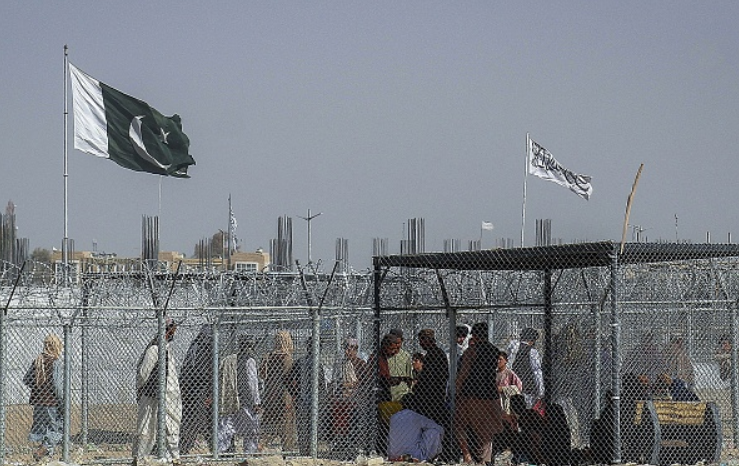
Entering 2022, Afghanistan remains dangerously close to a humanitarian crisis and civil conflict. A repeat of the 1980s or 1990s is not affordable for any state in the region, more specifically Pakistan which faces critical economic and governance issues. Pakistan’s convening of the special OIC Meeting of the Council of Foreign Ministers to generate support and solutions to the humanitarian crisis in terms of food shortages, displacement of people, and a potential economic collapse in Afghanistan, was successful with pledging of a fund for overcoming humanitarian crisis in the country. While the promise of aid by the OIC member states as well as Western capitals is a first step towards averting a humanitarian catastrophe from unfolding in Afghanistan, with no governance road map available to the Taliban regime, the crisis is by no means over.
Pakistan’s utmost concern has been the use of Afghan soil by proxy or independent elements seeking a haven and hurting its interests and security. Although Taliban leadership offered assurances shortly after taking power that Afghanistan would not be a haven for militants as the time has progressed there has been a visibly stronger presence of the Islamic State of Khorasan (IS-K) and little progress on a viable action against the Tehreek-e-Taliban Pakistan (TTP) assets operating from Afghanistan. Pakistan’s attempt to complete the fencing of the Pakistan-Afghanistan border, also referred to as the Durand Line, has also been met with resistance by the Taliban leadership. The Taliban facilitated talks between the Pakistan government and the TTP, which resulted in a month-long ceasefire beginning November 9, that could be further extended. However, a month later the TTP unilaterally ended the ceasefire on the pretext that the government had reneged on promises made in the initial stages of peace talks. Where Pakistan aims to have a stable enough Afghanistan, peace within the country is most important, as the entire thrust of country’s geoeconomic vision relies on peace and stability.
Moving Forward: An Economic Focus
Physical security is integral when it comes to securing Islamabad’s economic assets. Among these assets is the highly visible, and much criticized China-Pakistan Economic Corridor, which appears to be the country’s only economic lifeline for the foreseeable future. However, for international and domestic audiences alike, the question remains of whether Pakistan will be able to use this economic channel to find its footing. For Islamabad, the economic angle of CPEC is the least of its concerns as the country tries to adjust to shifting geopolitical fault lines amidst renewed U.S.-China competition. While the United States has seen a significant shift in leadership with the election of Joe Biden in November 2020, predictably, the broader U.S. strategy towards South Asia has not changed and there has not been any significant tilt favorable to Pakistan. Although the approach of the administration may have changed, U.S. reservations on CPEC remain the same as those held by the Trump administration.
Many policymakers in Islamabad and elsewhere have certainly concluded that Pakistan’s relevance and relations with United States at best are transactional. This makes the country’s tilt towards China a predictable move, however, Islamabad must also safeguard its interests and act with prudence in dealing with Beijing.
Where on one hand the pandemic has hurt economy worldwide, for Pakistan balancing economic lifelines for its citizens while establishing public health measures was a delicate situation. Pakistan also remained engaged in strengthening measures to tackle money laundering and illicit financing per the Financial Action Task Force (FATF) requirements. As noted in World Bank assessments, effective micro-lockdowns, record-high remittance inflows, and supportive monetary policy helped in strengthening and recovering of the economy in fiscal year 2021. But owing to increased domestic demand, imports outweighed the exports, leading to a large trade deficit. To have a sustainable economic growth, Pakistan will need to enhance exports, private investments, as well as identify the key factors that are hindering exports.
Roadmap to Stability
Many policymakers in Islamabad and elsewhere have certainly concluded that Pakistan’s relevance and relations with United States at best are transactional. This makes the country’s tilt towards China a predictable move, however, Islamabad must also safeguard its interests and act with prudence in dealing with Beijing. China’s strategic culture has long stressed the broad contours of non-intervention an coexistence—however, this differs strongly from much of the West’s perceptions of Beijing. As the United States enters what some have referred to as a “new Cold War” with the QUAD and AUKUS as its initial containment tools, the Indian Ocean will be an active zone of enhancing capabilities and potential conflict, where once again Pakistan would find itself in the eye of the storm. Islamabad must act wisely and channel its policymaking beyond the immediate to look more long-term and beyond the limited choices it exercises.
Besides setting up a viable governance road map, Pakistan’s utmost concern is and needs to be economic recovery and stability. While appealing for geoeconomics, Pakistan’s foreign policy outlook remains confined to a limited circle of countries, with little focus on capitals and markets of Africa, Latin America, and Southeast Asia. The need is to broaden the horizon, and as many perceive, CPEC would prove a proverbial gateway to the world for Pakistan. As Pakistan assesses these challenges, the National Security Division has, after seven long years, chartered what it terms as a “citizen-centric” National Security Policy (NSP) with economic security at the core. The NSP comes at a critical time when the country faces multiple challenges in a rapidly altering geopolitical environment. One can only hope that it becomes the promised road map for the country’s path to progress and stability.
***
Click here to read this article in Urdu.
Image 1: bm1632 via Flickr
Image 2: AFP via Getty Images
